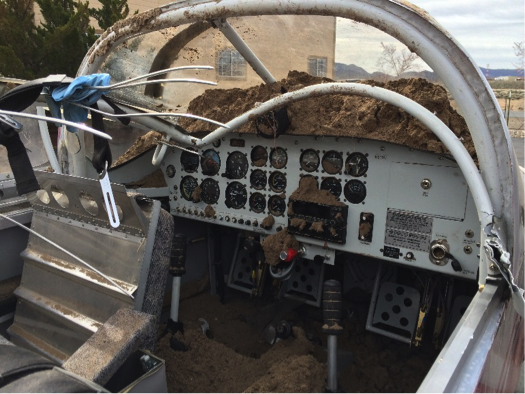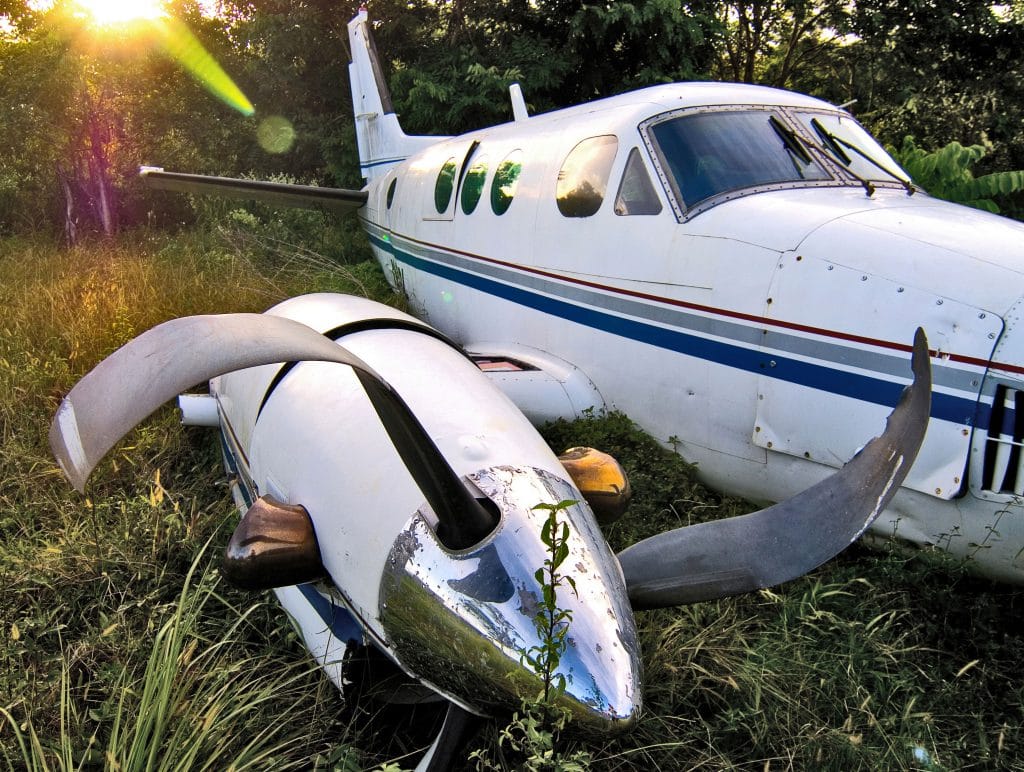Aircraft insurance salvage refers to damaged aircraft sold to recoup losses by insurance companies. Salvage aircraft can be repaired or used for spare parts in the aviation industry.
Aircraft insurance salvage is a crucial aspect of the aviation sector, ensuring that damaged planes are utilized effectively to minimize financial losses and support the ongoing operation of aircraft fleets. Salvage aircraft undergo rigorous inspections and evaluations to determine their potential for repair or salvageable parts, contributing to the sustainability and cost-effectiveness of the aviation industry.
This process plays a significant role in maintaining safety standards and operational efficiency within the aviation sector.
Introduction To Aircraft Insurance Salvage
Aircraft Insurance Salvage involves the recovery and disposal of damaged aircraft to minimize financial losses for insurers. Salvage companies assess the value of salvaged parts and determine the best course of action.
Aircraft insurance is an essential aspect of the aviation industry that covers the risks associated with owning and operating aircraft. In case of an accident or incident, aircraft insurance salvage comes into play. Salvage is the process of recovering and disposing of damaged aircraft, parts, or equipment. In this blog post, we will discuss the basics of salvage in aviation insurance and the importance of recovery value in aircraft incidents.The Basics Of Salvage In Aviation Insurance
Salvage is a crucial component of aviation insurance, and it involves the recovery of damaged aircraft, parts, or equipment. Salvage companies work closely with insurance companies to recover and dispose of damaged items. The process of salvage begins once the aircraft or equipment is deemed a total loss or beyond economical repair. Once the aircraft or equipment is recovered, it is assessed to determine its salvage value. The salvage value is the estimated value of the damaged item after it has been recovered. The salvage value is then used to determine the amount of compensation the owner will receive from the insurance company.Importance Of Recovery Value In Aircraft Incidents
The recovery value is a crucial aspect of aircraft incidents as it determines the compensation the owner will receive from the insurance company. The recovery value is based on several factors, including the age and condition of the aircraft or equipment, the extent of the damage, and the market demand for the salvage. In some cases, the recovery value can exceed the insured value of the aircraft or equipment. In such cases, the insurance company may opt to sell the damaged item to a salvage company instead of paying the owner the full insured value. In conclusion, aircraft insurance salvage is an essential aspect of the aviation industry that covers the risks associated with owning and operating aircraft. The process of salvage involves recovering and disposing of damaged aircraft, parts, or equipment. The recovery value is a crucial aspect of aircraft incidents as it determines the compensation the owner will receive from the insurance company.Types Of Aircraft Insurance Policies
Hull Insurance And Its Relevance To Salvage
Aircraft hull insurance covers physical damage to the aircraft itself, providing protection in the event of an accident or incident.
This type of insurance is crucial for salvage operations as it ensures that the aircraft’s value is protected in case of damage.
Liability Coverage And Salvage Operations
Liability coverage in aircraft insurance safeguards against third-party claims for property damage or bodily injury.
During salvage operations, liability coverage is essential to protect the salvage team and any third parties involved in the process.
Determining Salvage Value
Determining the salvage value of an aircraft is a crucial aspect of aircraft insurance salvage. It involves assessing the worth of the aircraft in its damaged state, considering various factors that influence its value. The process of determining salvage value requires the expertise of appraisers who play a significant role in the valuation process.
Factors Influencing The Salvage Value Of Aircraft
The salvage value of an aircraft is influenced by several key factors that appraisers take into consideration. These factors include the extent of damage, age of the aircraft, market demand for salvageable parts, and the overall condition of the aircraft’s components.
The Role Of Appraisers In Salvage Valuation
Appraisers play a crucial role in determining the salvage value of aircraft. They utilize their expertise to assess the condition of the aircraft, evaluate the market demand for salvageable parts, and consider the potential for salvaging and reusing various components. Appraisers also take into account the current market conditions and industry trends to provide an accurate valuation of the salvage value of the aircraft.

Credit: www.underwriterssalvagecompany.com
The Salvage Process
Aircraft salvage is a critical aspect of the aviation industry, involving the recovery and disposal of damaged or decommissioned aircraft. The salvage process encompasses a series of steps and challenges that require specialized expertise and resources. Understanding the intricacies of aircraft salvage is essential for aviation professionals, insurers, and anyone involved in the management of aircraft assets. In this article, we will delve into the salvage process, explore the steps involved, and address the challenges encountered during the recovery of a damaged aircraft.
Steps In The Aircraft Salvage Operation
When an aircraft is involved in an accident or sustains significant damage, the salvage operation begins with a thorough assessment of the wreckage. This evaluation involves:
- Identifying salvageable components and materials
- Documenting the condition of the aircraft
- Securing the crash site to prevent further damage
Once the initial assessment is completed, the salvage team proceeds with:
- Disassembling the aircraft
- Transporting salvageable components to a designated facility
- Documenting the salvage process for insurance and regulatory purposes
Challenges During The Recovery Of A Damaged Aircraft
The recovery of a damaged aircraft presents a myriad of challenges, including:
- Environmental factors such as adverse weather conditions
- Logistical complexities in accessing remote or hazardous crash sites
- Ensuring the safety of salvage personnel during the operation
Moreover, the identification and preservation of crucial evidence for accident investigations add another layer of complexity to the salvage process.
Legal Aspects Of Salvage Operations
Aircraft insurance salvage involves complex legal considerations, particularly in salvage operations. It’s crucial to understand the legal aspects of salvage to ensure compliance and protect the interests of all parties involved.
International Laws Governing Aircraft Salvage
International laws play a significant role in governing aircraft salvage operations. The International Civil Aviation Organization (ICAO) sets standards and recommended practices for salvage operations, ensuring consistency and compliance across international borders. These standards help to establish clear guidelines for salvage activities involving aircraft, promoting safety and adherence to legal protocols.
Ownership And Rights In The Salvage Scenario
In a salvage scenario, ownership and rights are critical components that must be carefully evaluated. Salvage operations may involve multiple parties with varying interests, including the aircraft owner, insurance companies, and salvage operators. Clarifying ownership and rights is essential to prevent disputes and ensure a smooth salvage process.
Case Studies: Successful Salvage Operations
Analysis Of High-profile Aircraft Salvage Cases
High-profile aircraft salvage cases provide valuable insights into the complexities and challenges of salvaging aircraft. The analysis of these cases enables industry professionals to understand the various factors at play and the strategies that led to successful salvage operations. Studying these cases also helps in identifying best practices and innovative approaches that can be applied to future salvage efforts.
Lessons Learned From Past Salvage Recoveries
Examining past salvage recoveries allows us to extract valuable lessons that can guide future salvage operations. These lessons encompass a wide range of aspects, including the importance of thorough risk assessment, the role of advanced technology in salvage efforts, and the significance of collaboration among stakeholders. By learning from past experiences, the aviation industry can continually improve its salvage practices and enhance the overall safety and efficiency of aircraft salvage operations.
Environmental Considerations In Salvage
Dealing With Hazardous Materials During Salvage
Hazardous materials like fuel and chemicals must be handled safely during aircraft salvage to prevent environmental damage.
Minimizing Environmental Impact In Salvage Operations
Minimize environmental impact by implementing proper waste disposal methods and preventing leaks or spills.

Credit: www.kitplanes.com
The Future Of Salvage Operations In Aviation
The future of salvage operations in aviation is evolving, particularly in aircraft insurance salvage. Innovative technologies and advanced techniques are being employed to streamline the salvage process, ensuring efficient and cost-effective solutions for insurers and aircraft owners. As the industry continues to embrace new methodologies, the future of salvage operations in aviation looks promising.
Technological Advancements In Salvage Equipment
With the advancement of technology, the aviation industry is now able to improve the efficiency and effectiveness of salvage operations. One of the most notable technological advancements in the salvage industry is the use of drones. Drones equipped with cameras and sensors can provide real-time data on the damage and location of the aircraft. This information is crucial in determining the best course of action for the salvage operation. Another technological advancement is the use of 3D printing. Salvage companies can now create replacement parts using 3D printing technology, which can save time and money in the salvage process. Additionally, the use of virtual reality technology can aid in the training of salvage crews, allowing them to practice salvage operations in a safe and controlled environment.Predicting Trends In Aircraft Insurance And Salvage
As the aviation industry continues to evolve, so do the trends in aircraft insurance and salvage. One trend that is emerging is the use of data analytics to assess risk and determine insurance premiums. Insurance companies are now using data from flight records, maintenance logs, and other sources to determine the likelihood of an aircraft being involved in an accident. Another trend is the increased focus on sustainability in salvage operations. Salvage companies are now looking for ways to reduce waste and minimize the environmental impact of salvage operations. This includes recycling materials and finding ways to repurpose damaged aircraft parts. In conclusion, the future of salvage operations in aviation is exciting and full of possibilities. With the advancements in technology and the emergence of new trends, the industry is poised for growth and innovation. As the industry continues to evolve, it is important for salvage companies to stay up-to-date with the latest advancements and trends to ensure they are providing the best service to their clients.
Credit: www.global-aero.com
Frequently Asked Questions
What Is Aircraft Insurance Salvage?
Aircraft insurance salvage refers to damaged or written-off aircraft that insurance companies take ownership of after a claim is paid.
How Is Aircraft Insurance Salvage Determined?
Aircraft insurance salvage value is determined by assessing the extent of damage, market conditions, and potential repair costs.
What Happens To Aircraft Insurance Salvage?
Aircraft insurance salvage may be sold to salvage companies, rebuilt by specialized firms, or used for spare parts in some cases.
Conclusion
Aircraft insurance salvage plays a crucial role in the aviation industry, providing financial protection and risk management. Understanding the salvage process and its impact on insurance claims is essential for all involved parties. By staying informed about salvage procedures, stakeholders can navigate potential challenges effectively and ensure a smooth claims process.
